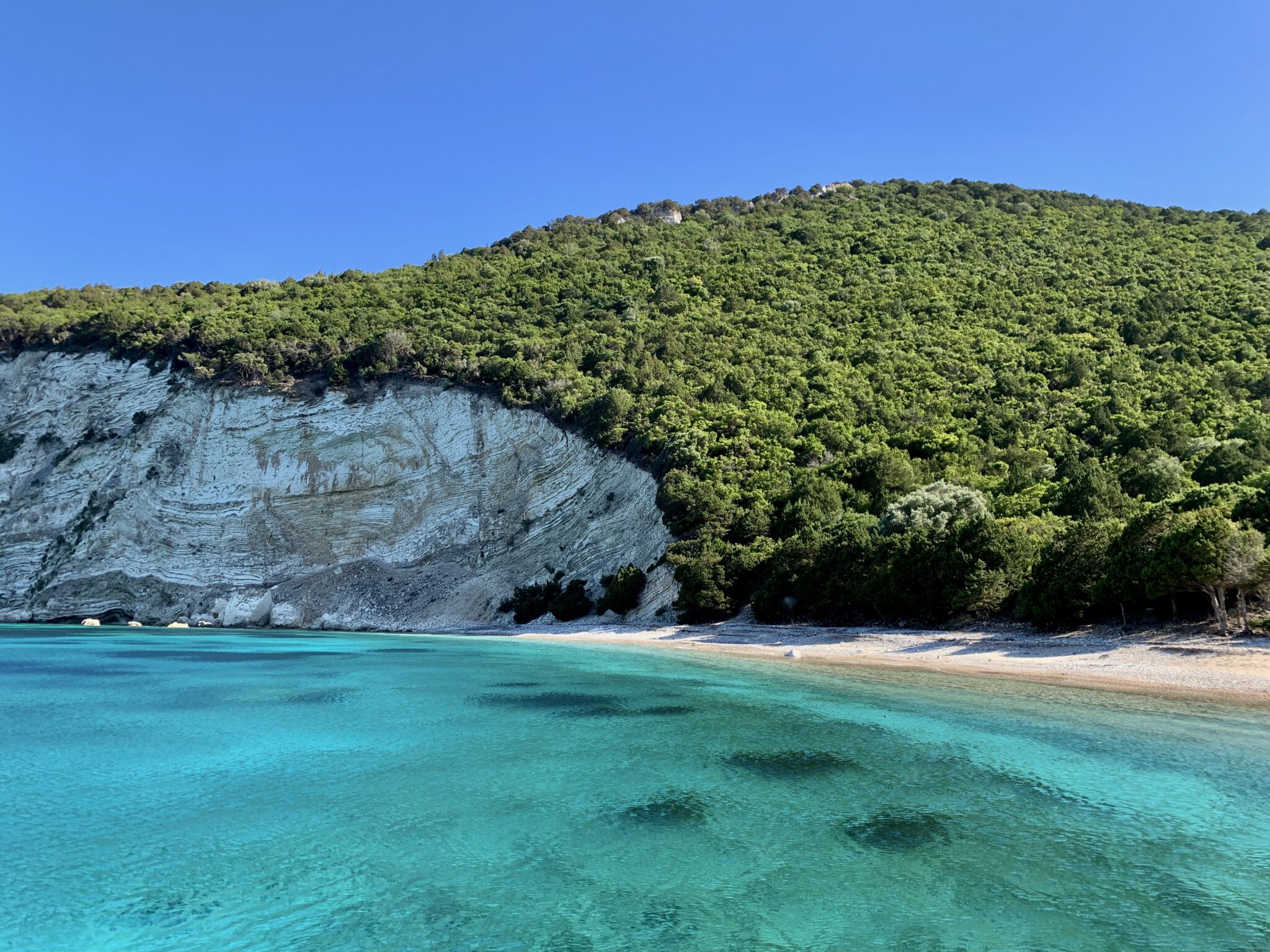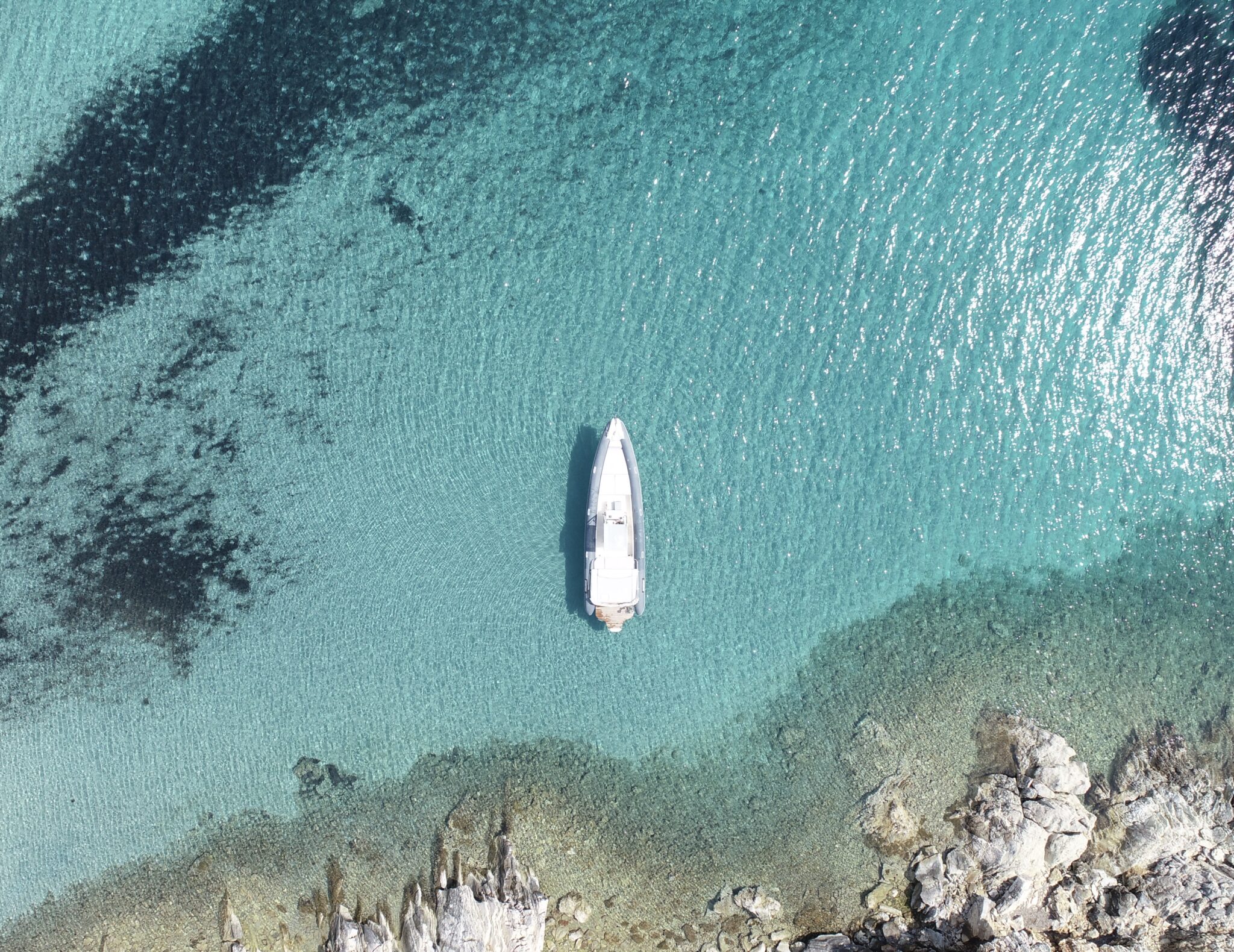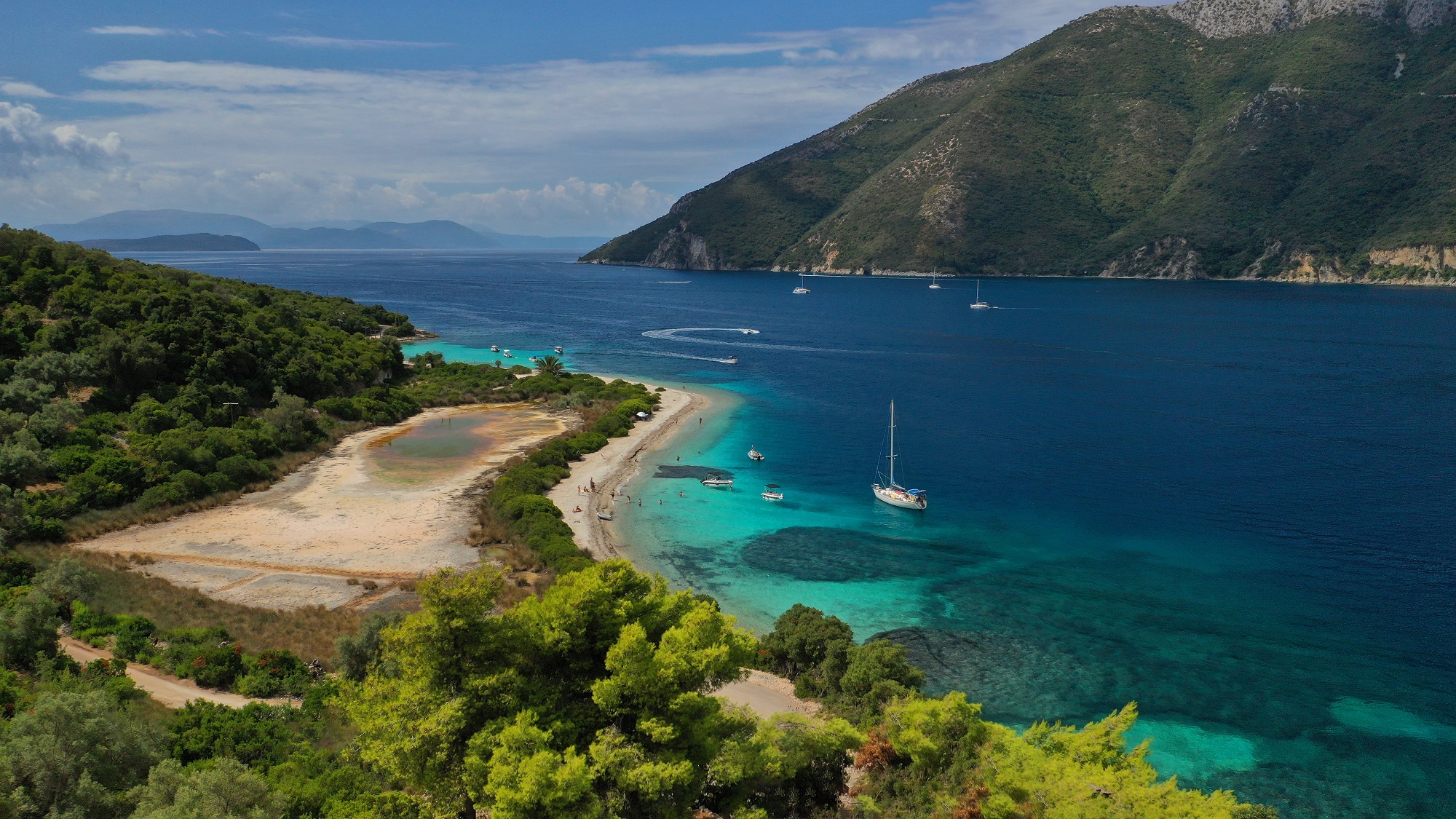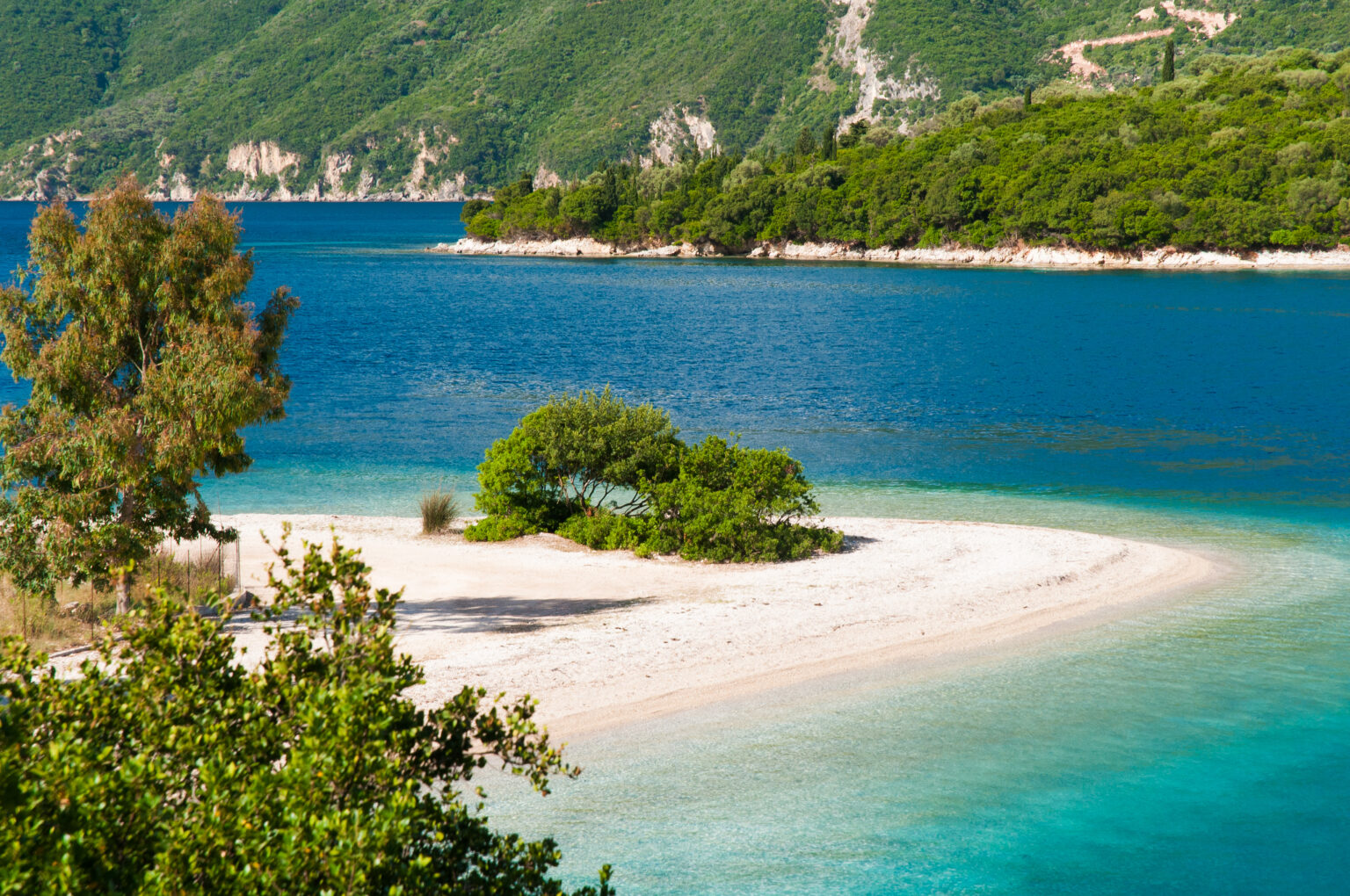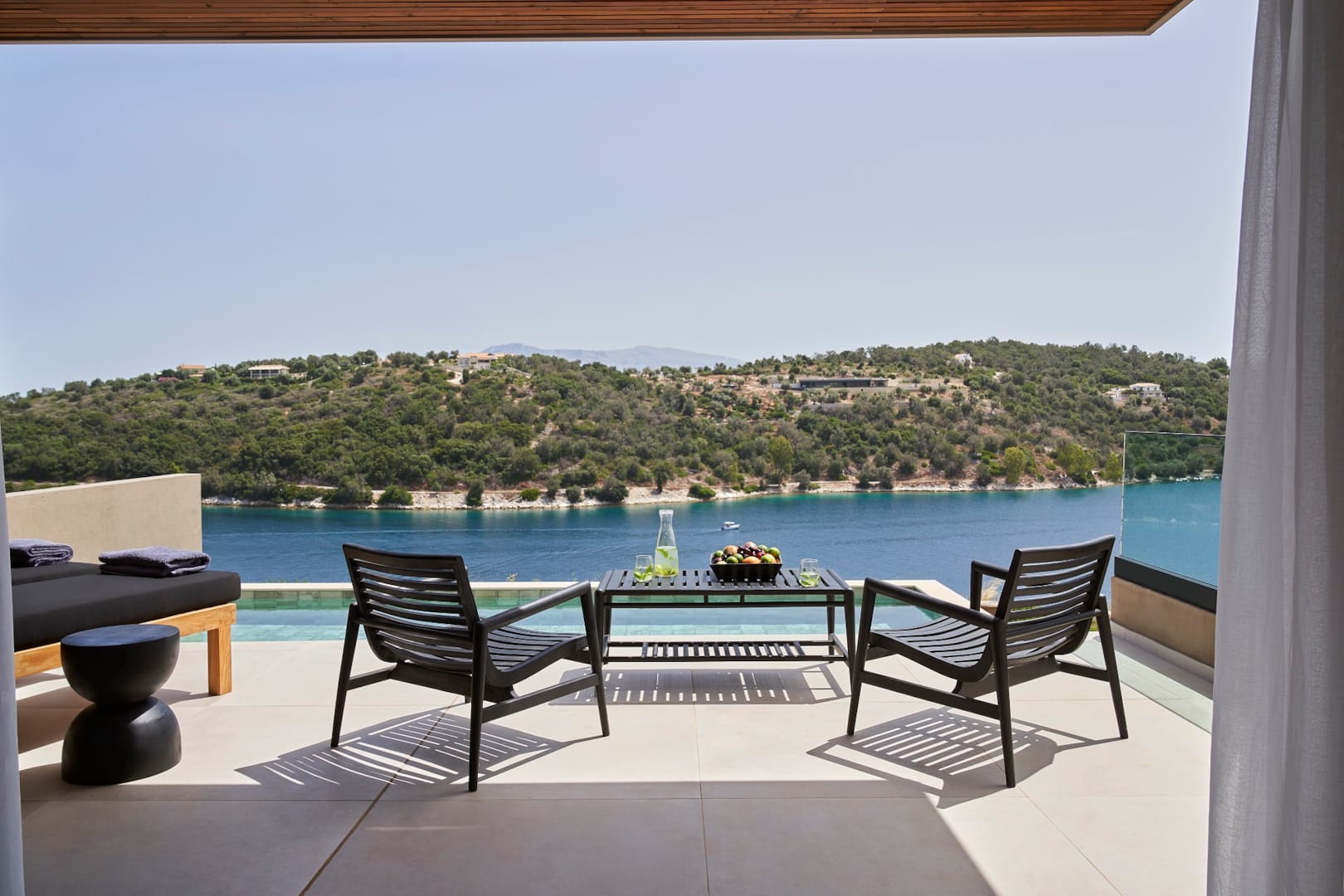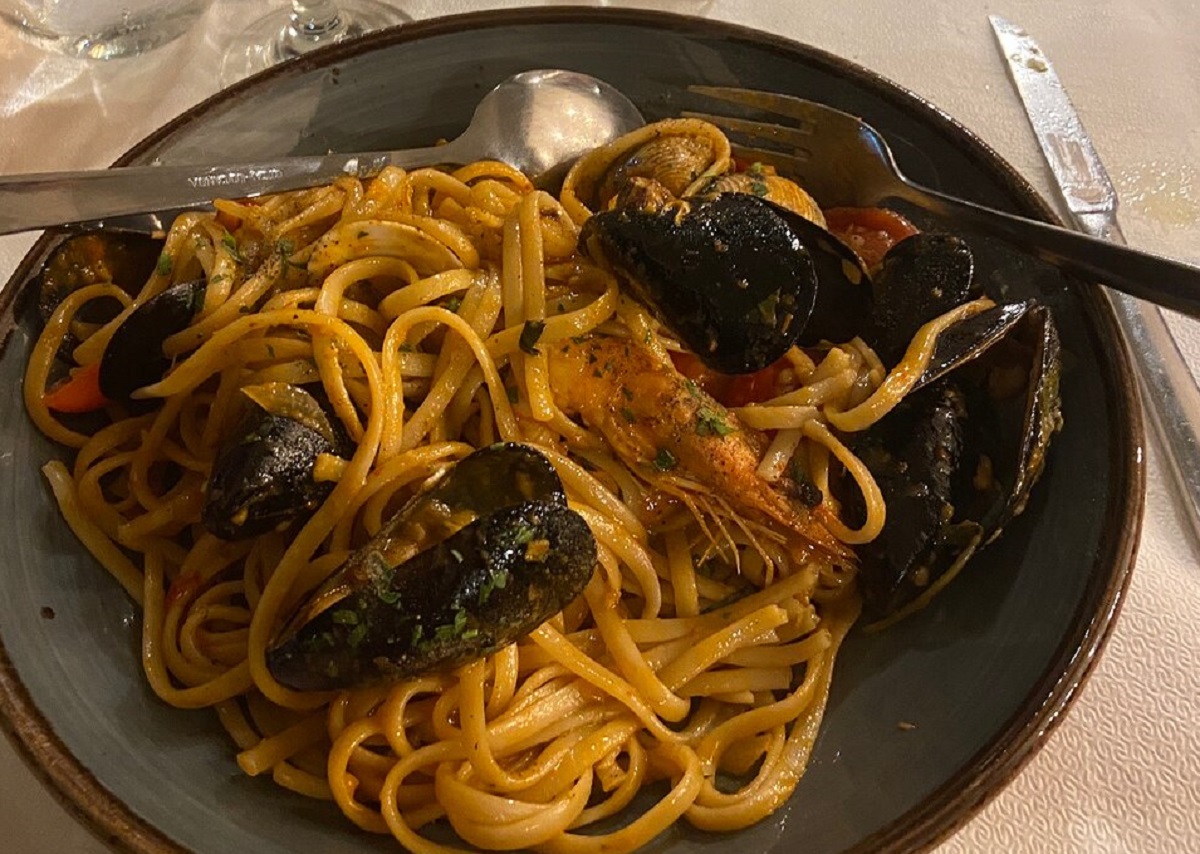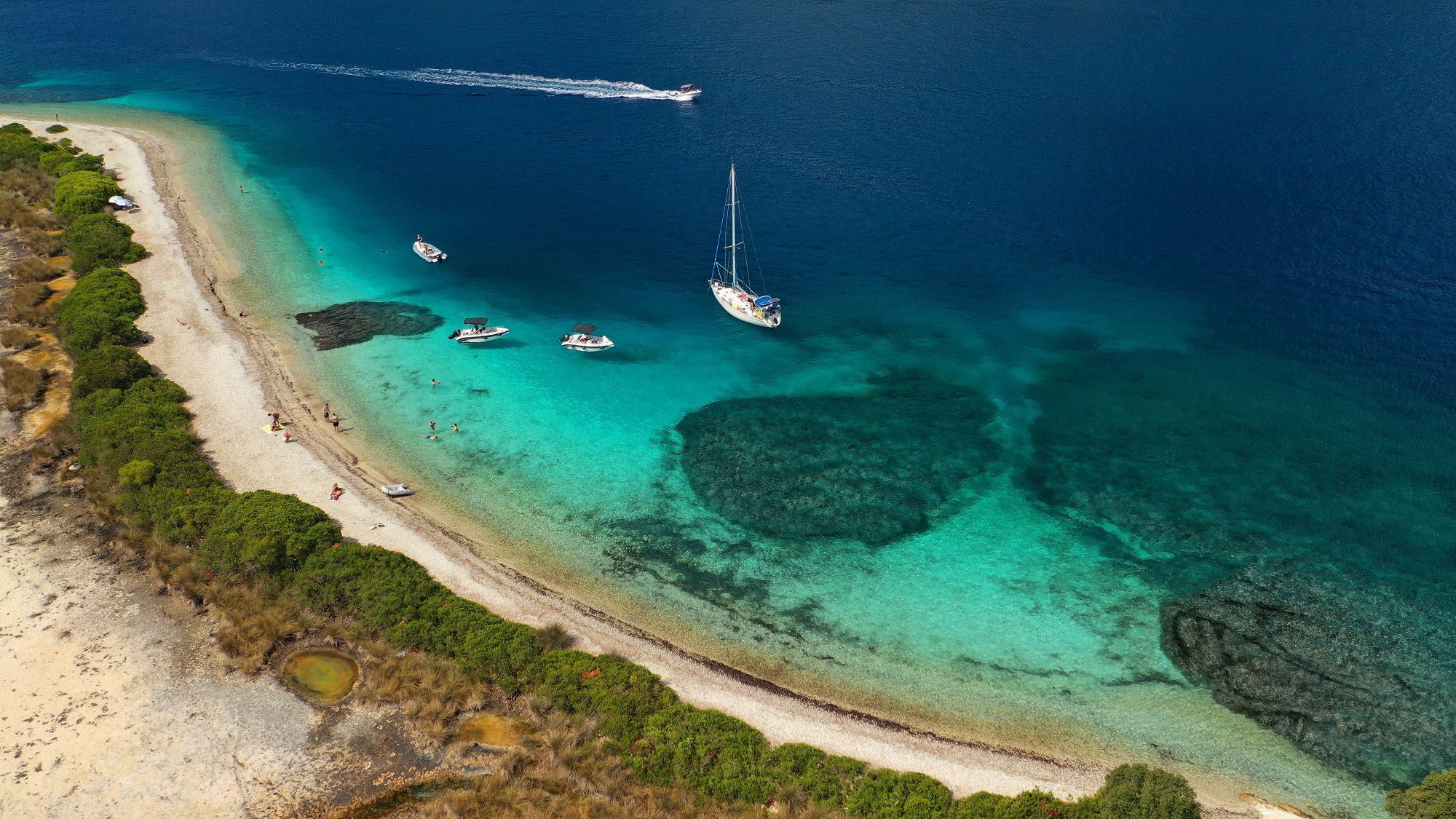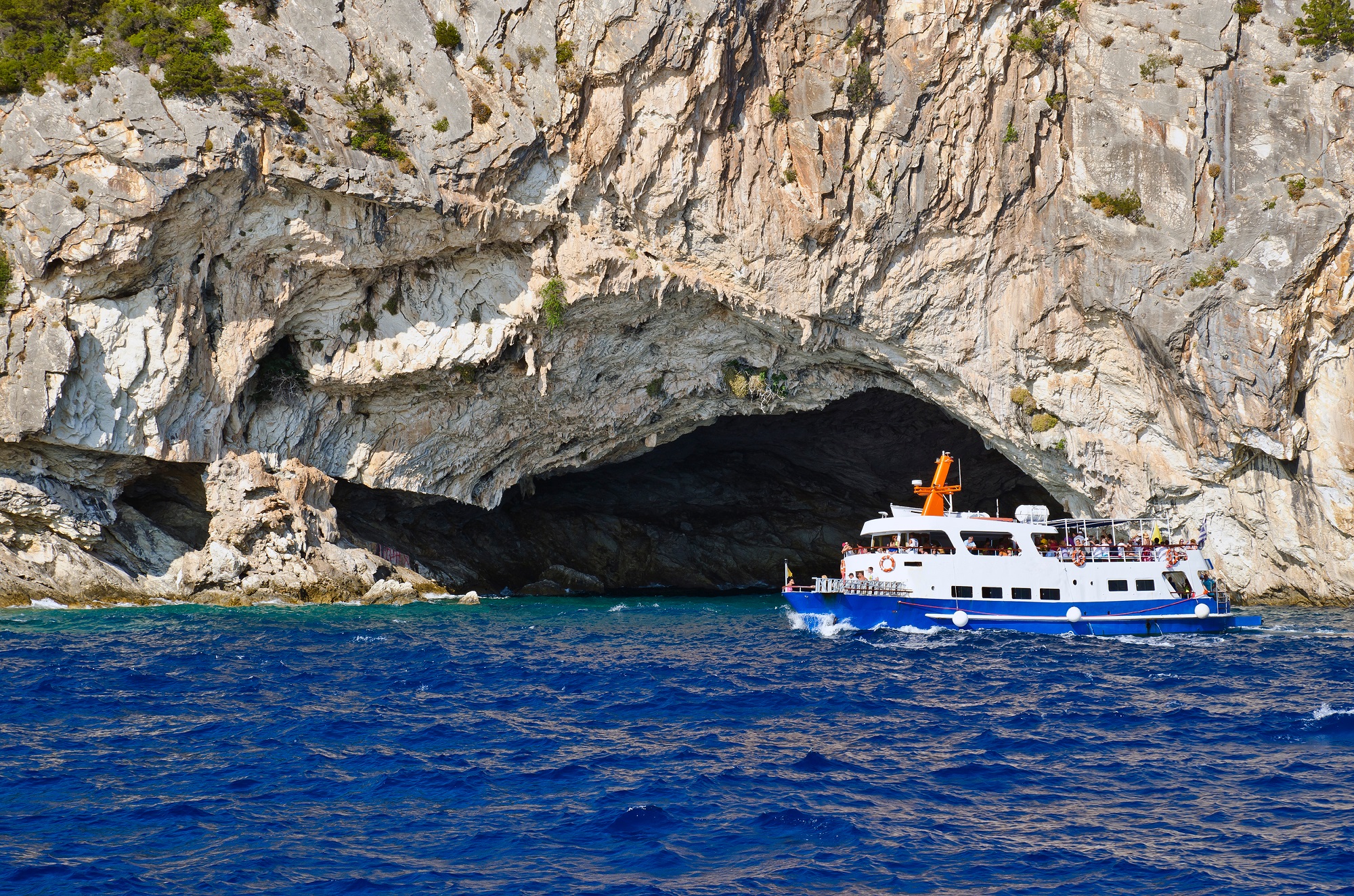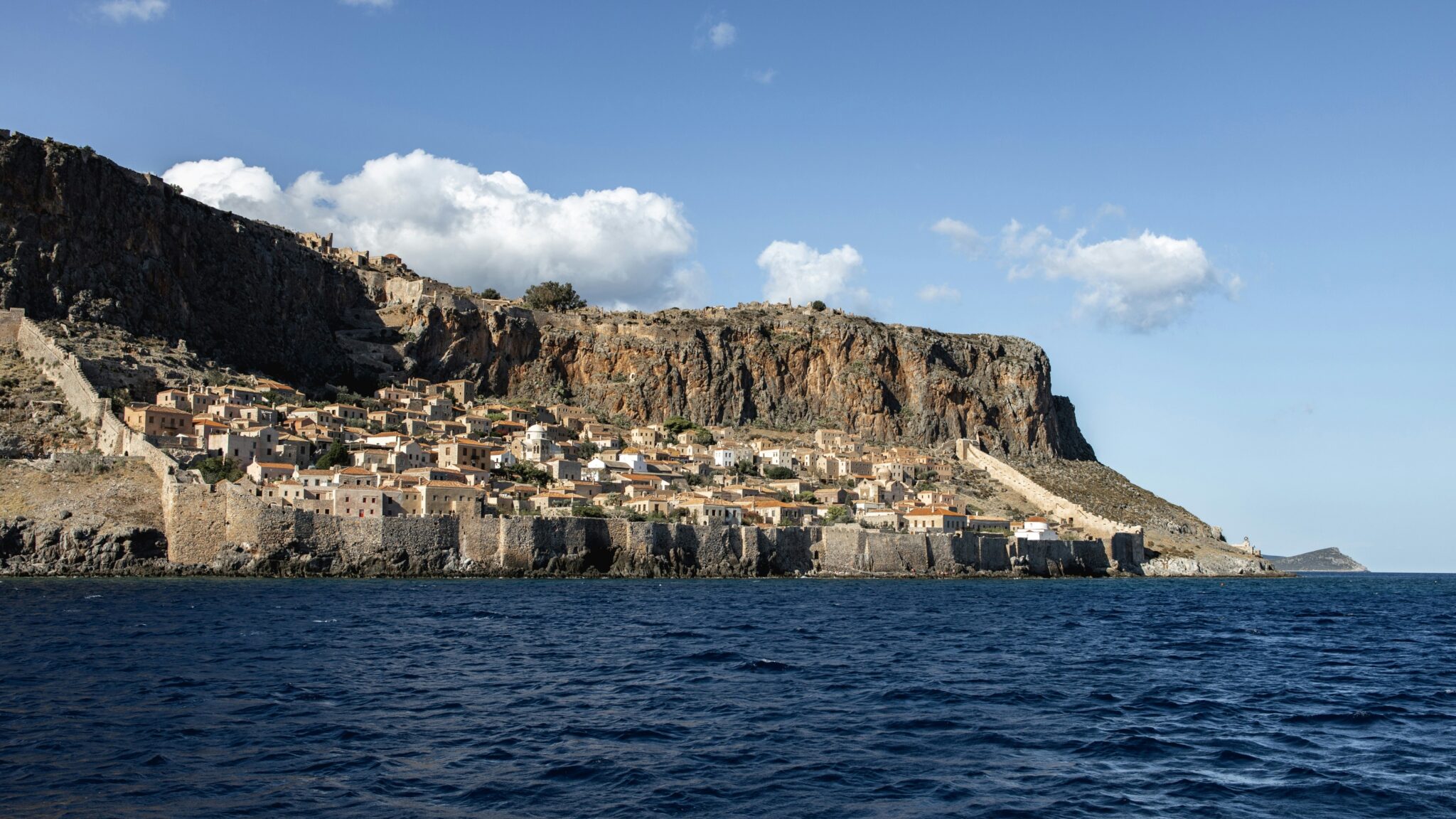Fjords are usually associated with Norway, and justifiably so, as this country’s imposing inlets resemble flooded river gorges. Such lacy, long and narrow inlets, however, are also a feature at Meganisi, an idyllic island destination in Greece’s Ionian Sea. Though far smaller, by comparison, these fjords are considered to be Greece’s most impressive.
Meganisi, situated between the far bigger neighboring Ionian island Lefkada, and the mainland’s Etoloakarnania region, is the biggest of a group of small regional islands known as the Prigiponisa, measuring 20.1 km2. According to a 2011 census, Meganisi’s population numbers 1,041 inhabitants.
In Homer’s writings, the island is referred to as Taphos, its king, Anchilaos, depicted as a friend of Odysseus. In ensuing years, Meganisi may have served as a hideout for pirates, while, from the 7th century BC onwards, the island followed a parallel course with neighboring Lefkada.
Meganisi may only be accessed from its eastern side, via Lefkada’s busy coastal town Nydri, on the east coast, offering regular boat service to the small island. The route cross takes about 25 minutes to cover, vessels reaching Spilia, the picturesque little port of Meganisi’s village Spartochori, as well as Vathy. The people of Meganisi played an active role in the Greek Revolution of 1821, it should be pointed out. Military commander Demos Tselios, immortalised in a renowned old Greek tune, “O Gero-Demos”, hailed from Meganisi.
Accommodation choices
Katomeri, Meganisi’s main village, hosts Fanari, the small island’s most popular beach. The rest of the island’s population is divided between the aforementioned Spartochori and Vathy. An assortment of accommodation choices, suiting all budgets, is available at all three villages. Most visitors choose rooms for rent or villas – lots of choices may be found on Airbnb – while hotels and guesthouses also exist.
Indicatively, in Vathy, the Azur Retreat hotel offers a luxury experience with a view of the island’s fjords and sea; Vathy Studios is popular among couples; and the boutique hotels Keromoussi Seaside and Mistral are well located for great sea views. At Spartochori, Sparto Village is set amid a lovely garden with an outdoor swimming pool, while Esperides Resort is an impressive spot for Ionian Sea relaxation. At Katomeri, the Meganisi hotel, at the edge of the village, is worth checking out.
Coffee and drinks
As is the case with other tourism hotspots, most cafes on Meganisi open early in the day, as cafes, and transform into bars at night, their offerings, besides drinks, including food choices.
Meganisi offers many such places. To mention just a few, in Katomeri, Fanari and Jammin In Paradise are both exceptional beach bars. Both these spots are situated at the village’s Fanari beach. At Vathy, the Boom Boom bar serves superb martinis and The Pistrina Project is an attraction for morning coffee and nightlife outings. At Spartochori, the beach bar Agrios, also popular, is one of the oldest on Meganisi.
Food choices
Meganisi also rates highly for its food, offering great choices. Visitors should definitely try the taverna Errikos, in Vathy. Established in 1978, it is the island’s most renowned eatery for fresh fish. This spot is frequented by celebrities who visit Meganisi on private yachts. The mussel pilaf and bourdeto (fish cooked with onion, and red sweet and hot spicy pepper) are both highly recommended dishes. All food on the menu, for that matter, is terrific.
Indicatively, the Stavros family taverna, serving superb moussaka and handmade taramosalata (fish roe dip), is an exceptional choice, as is Marinata, popular among guests from abroad in summer. Next to the square, the Rose Garden taverna serves homemade Greek cuisine, including renowned meat balls and stuffed tomatoes, while, at the port, Gantzos uses local ingredients and has built a reputation for offering the best souvlaki on Meganisi. If desiring Italian cuisine, head to the Tilevoes restaurant.
At Atherino, the Katomeri village port, Niagas is a family taverna serving good Greek cuisine. For Mediterranean cuisine, Il Paradiso, at Agios Ioannis, is recommended, while, for pizza and pasta dishes, head to Tropicana in Spartochori.
4 special experiences on Meganisi
Despite its limited size and fame, compared to the bigger Ionian Islands, Meganisi’s fjords and other spots of unique beauty make the island an exceptional Ionian Sea destination for travellers seeking quiet summer holidays with a touch of cosmopolitan life. After all, this island is just a stone’s throw away from the Onassis family’s legendary Skorpios island. No matter where you choose to stay on Meganisi, it is worth visiting all three of the island’s villages. Also definitely seek the olive oil and wine produced by local olive groves and vineyards.
Visit the island’s beaches
Meganisi’s fjords form many small beaches, luring many visitors in summer. These beaches may not be the most spectacular, but they are set alongside exquisite turquoise waters and lush landscapes, trees typically reaching the waterline. As previously mentioned, Fanari, at Katomeri, Meganisi’s main village, is the island’s most renowned beach.
Other fine choices, for outings and swims, include Agios Ioannis, featuring a trademark tongue-shaped beach, Roka, Limonari, Spilia, Atherinos, Elia, Abelaki and Pasoumaki. Besides these spots, plenty more small yet picturesque bays await to be discovered. If you are on a private yacht, definitely look for the secluded and gorgeous Bereta beach, at the island’s remote southern section.
Visit the Papanikolis sea cave
Meganisi features a number of sea caves endowed with blue, crystal-clear waters. The Papanikolis cave is, by far, the most famous of them all. According to legend, the renowned Papanikolis submarine, active during World War II, maintained its secret base at this cave.
The Papanikolis cave, situated at the southwestern edge of the island, measures 120 metres in length and 30 metres in width. From the outside, the sea cave’s width seems greater, approximately 60 metres, but its interior narrows significantly, to as little as approximately 23 metres. The superb sandy beach shaped within is definitely worth reaching.
See the Cave of the Cyclops
The Cave of the Cyclops, the island’s second-most famous sea cave, following the Papanikolis cave, is situated at Kalopoulou bay, directly above Spilia beach, 50 metres above sea level.
The location’s reputation stretches back to antiquity, as, according to legend, this cave is among the spots thought to be linked to Polyphemus, one of the Cyclopes described in Homer’s “Odyssey”. These theories, of course, depend on one’s geographical interpretation of the “Odyssey” and acceptance of the text as historical truth.
Visit the Agios Ioannis monastery
Agios Ioannis, a small monastery at a pebble-covered beach of the same name on Meganisi’s western side, is believed to date back many centuries. According to legend, the monastery’s foundations were laid prior to 1477, but then destroyed by pirates, said to have tossed an icon of St. John into the sea, which was miraculously saved after getting caught in a local fisherman’s fishing nets.
In 1800, a member of an affluent family in the region named Ioannis Patrikis, asked a nun to have the monastery rebuilt. She is believed to have gone as far as to the tsar of Russia to seek funds for the monastery’s construction. This nun’s tomb lies among the foundations of the monastery’s old and new walls.
Read also:
The best family beaches in Paros
Two beaches in one -Domata, the secluded beach of southwest Crete



